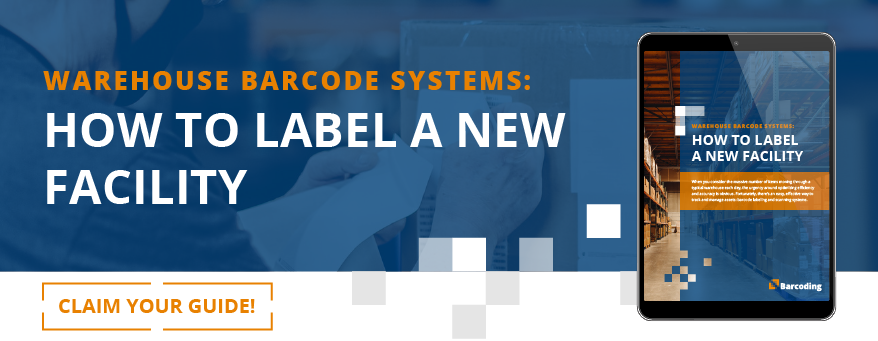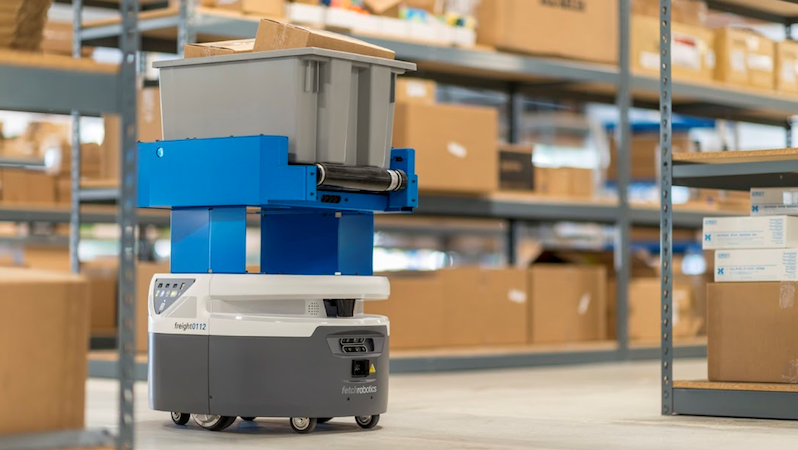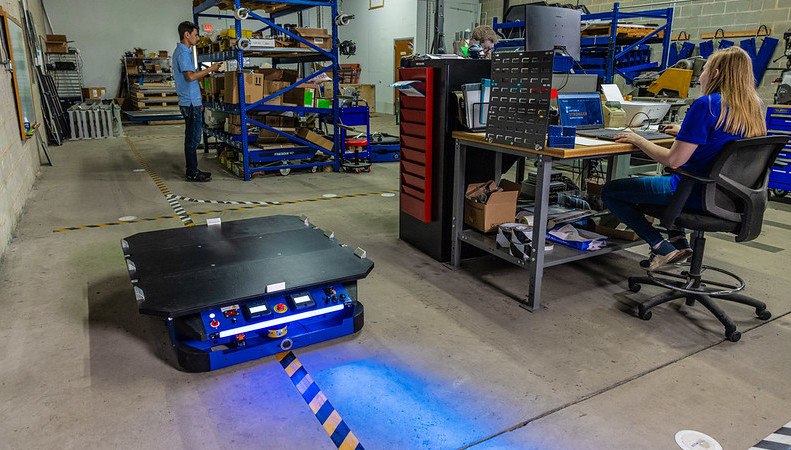What comes to mind when you think about robots?
Humans have long been intrigued by robots, thanks at least in part to decades of “futuristic” depictions in film and on TV. You might imagine a metallic humanoid with arms, legs…maybe even a face and a penchant for witty banter.
But when it comes to automation and robotics for use in warehouses, distribution centers, and fulfillment environments, don’t expect C-3PO.
That’s not to suggest the people working alongside autonomous mobile robots (AMRs) aren’t quickly warming up to their presence and discovering endless new use cases to save labor, improve efficiency, and make work better for employees.
The paradigm is shifting when it comes to warehouse robotics—and in particular, AMRs. The convergence of labor shortages, high real estate costs, changing consumer behaviors, and unpredictable markets have created a space where AMRs can help solve challenges that otherwise will continue to spiral.
To many of these business decision-makers, AMRs are the next logical addition to augment workflow automation, barcode scanning, sensors, machine vision, and the many technologies that have helped transform supply chains.
So let’s take a look at some of the biggest questions folks have about AMRs and explore a few optimal use cases where users are achieving ROI in a remarkably short time.
Workers Have Questions About AMRs, Too
It’s key to remember, while your questions about AMRs will need answers, the most important questions to address are employees’. After all, they’ll be the ones working side-by-side with AMRs, using them as another tool in their productivity arsenal, and pointing out even more AMR use cases for your operations. When workers recognize the ways AMRs can make their workdays safer, simpler, more productive, and more enjoyable, their engagement will help you achieve the ROI you need.
Are AMRs Safe to Work Around and Interact With?
The question of safety needs to be at the absolute top of your list; there’s simply no efficiency or productivity increase that could justify making any workplace less safe. While there is currently no Occupational Health and Safety Administration standard for industrial mobile robots, in its regulations OSHA references ANSI/RIA R15.08-1-2020, the first safety standard that covers mobile robots and addresses fully autonomous navigation, accepted by the American National Standards Institute and the Robotics Industry Association.
AMRs use a combination of LiDAR (light detection and ranging) and sensors to “see” their surroundings. This enables them to detect and avoid obstacles by stopping and even navigating safely around them. They can also feature flashing lights and/or sounds to alert workers to their presence.
When used correctly, not only are AMRs safe, but their operation requires safe conditions like clean, debris-free floors free of spalling, craters, or standing water. Depending on the payload capacity, AMRs can reduce reliance on forklift trucks and other types of equipment that are known safety hazards.
Will AMRs and Other Industrial Robots Replace Human Workers?
In fact, most companies introduce AMRs at least in part to improve the employee experience. AMRs are best used for tasks that are tedious or heavy, or that require walking long distances while moving items. Warehouse pickers can leave those menial and nonproductive tasks to a robot and instead direct their human efforts, attention, and capabilities where they’re best used.
In fact, a 2022 study found that, on the whole, workers view robots positively—and three-quarters of warehouse workers say the physical demands of the job take a bigger toll on them than the mental tasks.
While some workers cited a fear of being replaced, 74% of on-floor warehouse employees said they’d consider working for lower pay to have access to technologies that make the job easier. In the context of a labor shortage, adding AMRs that help workers be more efficient and productive can prove to have recruiting and retention value.
Top Quick-Win AMR Use Cases for Warehouses
Now that it’s clear both warehouse floor workers and operational leaders can benefit from AMRs’ potential for reducing workloads and improving productivity, one critical factor for achieving your ROI goals is identifying optimal use cases.
Typically, most AMR users start with one or more of these tasks:
- Dunnage: moving waste or cardboard dunnage from any location in a facility to the trash collection or compactor
- Milk run: moving products from location to location within the facility
- VLM to packout: receiving products from a vertical lift module and moving them to the location where they’re needed
- Work cell delivery (in manufacturing environments): transferring materials from a raw materials area to assembly or other processing locations
These use cases are just a beginning; once the AMR is on the floor and workers familiarize themselves with its operation and capabilities, it rarely takes long before multiple new use cases reveal themselves—and with every new job an AMR takes on, human safety and productivity increase, too. And if the AMR’s work queue grows beyond its capacity, it’s quick and easy to simply add another AMR.
Automation like AMRs are just one more way to improve efficiency and productivity in warehouse and DC operations. Along with new and advanced technologies, longstanding warehouse labeling best practices streamline order picking, processing, and inventory management to support productive and profitable operations. Get started with our free guide. Just click here or below to get yours now.







